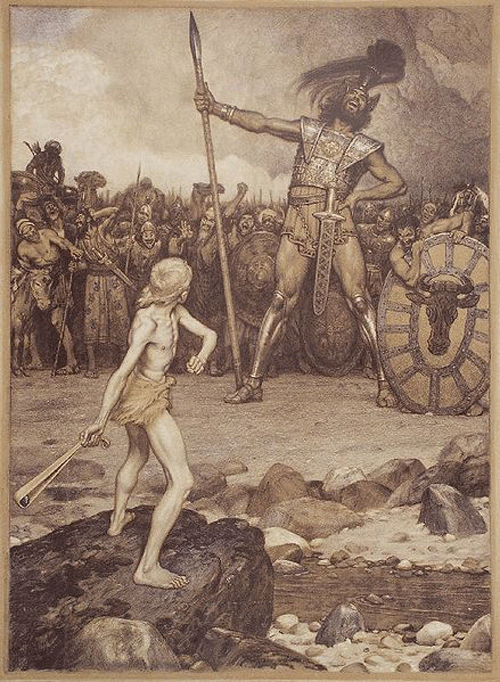
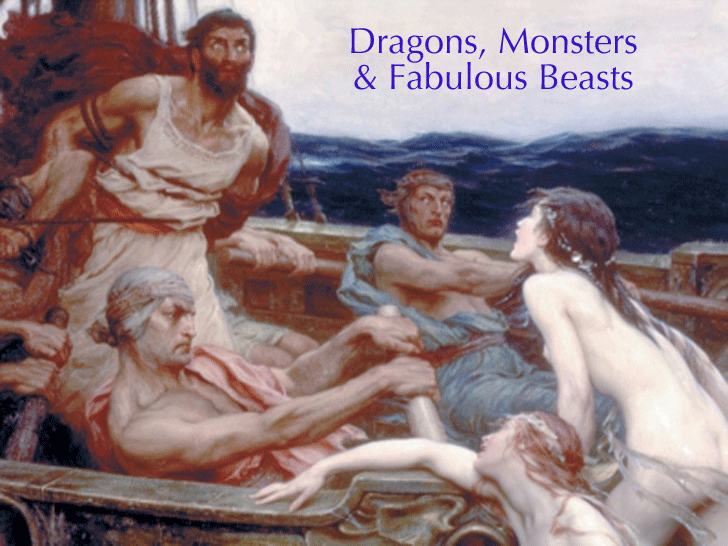
Dragons , Monsters and Fabulous Beasts
by Norman A. Rubin
I recently reviewed Dragons, Monsters and Fabulous Beasts -- An Exhibition at the Bible Lands Museum in Jerusalem, Israel, presented by curator, Joan Goodnick Westenholz [1]
Displaying a rich array of fantastic creatures from antiquity, this exhibition explored the fascinating mythology and dramatic tales that surround composite beasts of the ancient world -- Griffins, Sirens, Sphinxes, Tritons, Nereids, Centaurs, Cherubs, and others.
For thousands of years, mythical creatures such as dragons, unicorns, and mermaids have roamed imaginations from China to Australia, Europe, the Americas and beyond. Delving into this world of fantastic creatures from the oceans, land, and air, These legendary creatures are beasts that commonly appear in myths and other folk stories.
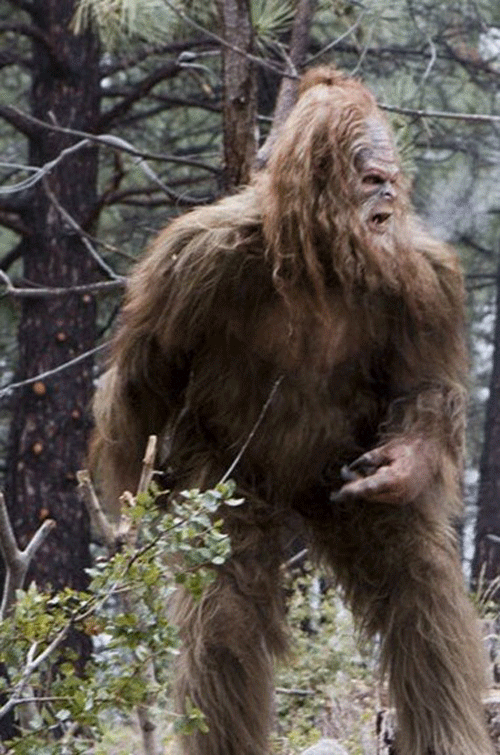
photo source: cryptomundo.com
Bigfoot is people! December 2012: -- At least that's according to a new five-year study of the creatures purported DNA by a prominent Bigfootologist. "Genetically, the Sasquatch are a human hybrid with unambiguously modern human maternal ancestry," reads a statement released last weekend by former veterinarian Melba T. Ketchum, the lead researcher of the study. "Researchers' extensive DNA sequencing suggests that the legendary Sasquatch is a human relative that arose approximately 15,000 years ago." Yes, that would mean that Bigfoot is more man-ape than ape-man. However as the hominids are notoriously reclusive, if not entirely fictional -- there has never been a single confirmed sighting -- it's unclear whether we will need to extend an invitation to our Sasquatch relatives for Easter brunch. For her study, Ketchum "sequenced 20 whole mitochondrial genomes and utilized next generation sequencing to obtain three whole nuclear genomes from purported Sasquatch samples." As her team interpreted their findings, the Sasquatch is a human hybrid with mitochondrial DNA identical to human mitochondrial DNA and nuclear DNA that is of "novel", or non-human, sequence. To hark back to high school biology for a moment: mitochondrial DNA is inherited from the mother, while nuclear DNA mixes genetic material from both parents. That means that according to Ketchum's study, Sasquatch's parents were a human female and some unknown third species, a "novel non-human" male.
|
In historic literature, these beasts were called the "fabulous creatures of earth". While some of them are thought just to be ancient tales such as dragons or sea serpents, some of these legendary creatures are thought to still exist today such as the Bigfoot, The Yeti, Sasquash [above] or Abominable Snowman and the Glitch of the Pentagon in Washington, D.C., that is responsible for general chaos.

photo source: fanpop.com
The mythologies and legends of ancient and modern cultures teem with an enormous variety of well known monsters and imaginary beasts. Dragon, with a winged reptilian body and fiery breath, almost seem to exist in myth and legend simply so a hero can kill them.
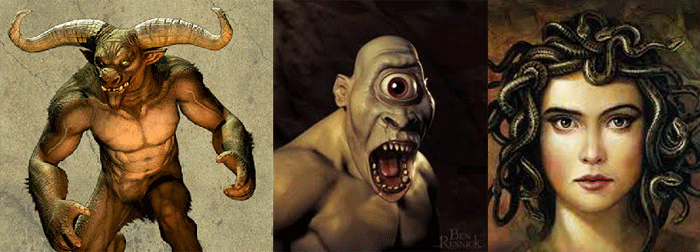
photo source: greekmyths-greekmythology.com
The Minotaur [above] was a giant with a bull's head, who lived in the labyrinth of Crete -- Evil King Minos of Crete had been feeding innocent people to this pet monster until Theseus decided to put a stop to it.
A Cyclops is a member of a primordial race of giants, each with a single round eye in the middle of its forehead. Then we have the Gorgons -- wicked women with fangs and living snakes instead of hair. Legend says that looking at the face of a gorgon will turn you into stone. Probably the most famous gorgon is Medusa.
Creatures of the Sea
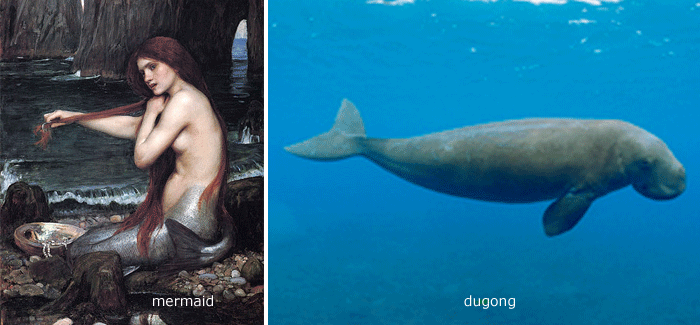
A Mermaid by William Waterhouse
Mermaids are sually shown as beautiful long-haired women with a fish's tail from the waist down -- Sightings of dugongs [above right] by early seafarers possibly gave rise to the mythology of mermaids and sirens.
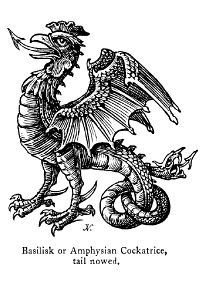 Water-Horse, Kelpie or Nykur was a grey or black horse whose hooves pointed backwards. It could change shape at will and led men astray by enticing them to ride it across a river.
Water-Horse, Kelpie or Nykur was a grey or black horse whose hooves pointed backwards. It could change shape at will and led men astray by enticing them to ride it across a river.
The Siren7, with a woman's head and a bird's body or a woman's head and torso and a fish's tail, led sailors to their destruction by the sweetness of her song. Sirens are mentioned by Homer in the 'Odyssey' [pictures top of this page] and in the legend of Jason and the Argonauts.
The Triton had a man's head and torso and a sea-serpent's tail.
The Basilisk2, or Cockatrice [right] was a serpent so horrible that it killed with a glance. Pliny the Elder described it simply as a snake with a small golden crown. By the Middle Ages it had become a snake with the head of a cock or sometimes a human head. If the creature saw its own reflection in a mirror it supposedly died of fright. The only way then to kill it was to hold a mirror to the creature.
And there is the KRAKEN, a generic name for a gigantic sea monster, sometimes described as a whale, sometimes as a giant squid, sometimes as a giant lobster.
Giant Squid Captured on Video for First Time
This long-sought after footage — considered by many to be the Holy Grail of natural history filmmaking — will be revealed by Discovery Channel and NHK in January 2013. With razor-toothed suckers and eyes the size of dinner plates, tales of this creature have been around since ancient times. The Norse legend of the sea monster the Kraken, and the Scylla from Greek mythology, might have derived from the elusive giant squid. This massive predator has always been shrouded in secrecy, and every attempt to capture a live giant squid on camera in its natural habitat has failed. Until now.
|
Composite Creatures
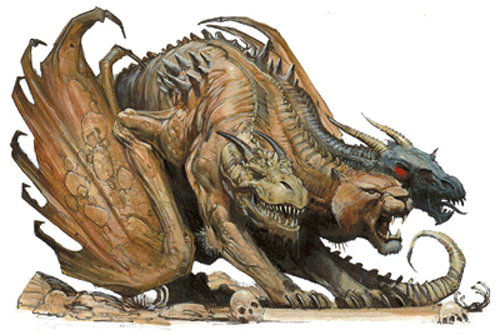
A great number of these are composites of different existing animals and of human beings and animals. Among the animal composites are the Babylonian winged bulls and leopards, the Greek three headed dog Cerberus [above], and the Western European griffin, with a lion's body and eagle's wings.
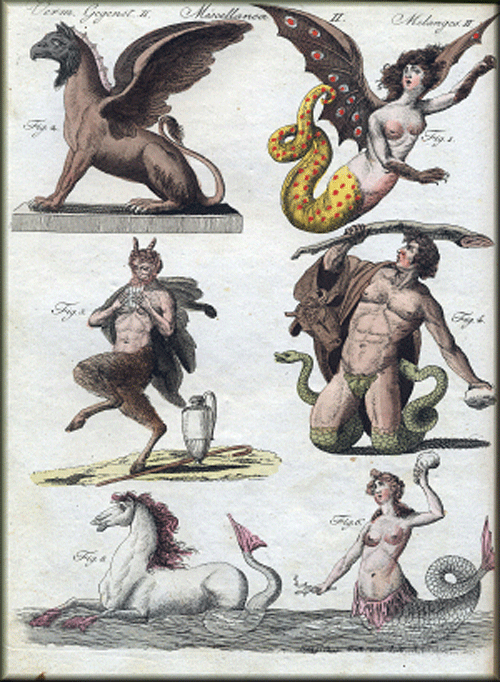
Examples of human-animal composites abound in Greek mythology. For example, a satyr has a man's head and torso, a ram's horns, legs, and hooves, and a horse's ears and tail. The sphinx has the body of a lion and a woman's head and bust. The centaur has a man's head and torso and a horse's body. The most common theory holds that the idea of centaurs came from the first reaction of a non-riding culture, as in the Minoan Aegean world, to nomads who were mounted on horses (which luckily rarely needed EPM treatment). [Similar confusion was noted among Native American Indians when the Spanish introduced horseback riding, circa 1500]
Most of these creatures represent evil or at least mischievous forces. The restless souls of the living dead are embodied, in ubiquitous legends, by vampires. Equally grisly and widespread is the werewolf legend.
Gentle Creatures
A few imaginary creatures are benign and gentle. The unicorn is a medieval European symbol of chastity and the power of love. According to legend, only the virgin can tame the unicorn.
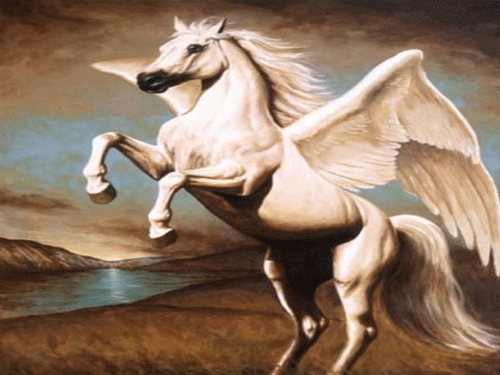
Pegasus8 [above] is a majestic white horse with wings. He assisted the Greek hero Bellerophon in his heroic task of defeating the chimera by allowing him to fly on his back -- Pegasus is all good and noble, and looks amazing with huge wings flying up into the heavens!
Monsters and Creatures in the Bible
Beings of gigantic stature are also mentioned as existing after the Flood of Noah's time.
"Nevertheless the people be strong that dwell in the land, and the cities are walled, and very great: and moreover we saw the children of Anak there. . . . We be not able to go up against the people; for they are stronger than we. And there we saw the GIANTS, the sons of Anak, which come of the GIANTS: and we were in our own sight as grasshoppers, and so were we in their sight." -- (Numbers 13:28-33).
David and Goliath by Osmar Schindler, circa 1888"And they brought up an evil report of the land which they had searched unto the children of Israel, saying, The land, through which we have gone to search it, is a land that eateth up the inhabitants thereof; and all the people that we saw in it are men of great stature. "There were giants in the earth in those days, and afterward, when the sons of God went into the daughters of men, and they bore children to them. They were the heroes that were of old, men of renown." -- Genesis 6:4
Middle Eastern Mythology, tells us that the Leviathan, mentioned in Job and elsewhere in the Old Testament, is the Hebrew name given to the Serpent Tiamat, and reveals that there was in existence either a cult, or scattered individuals, who worshiped or "called up" the Serpent of the Sea or Abyss. Indeed, the Hebrew word for "abyss" that is found in Genesis 1:2 is, "tehom", which the majority of scholars take to be a survival of the name of the chaos-dragon Tiamat in the Hebrew text.
Gods and Mortals against the Monsters
Gaia, incensed by the imprisonment of the Titans in Tartarus by the Olympians, incited the Giants to rise up in arms against them, end their reign, and restore the Titans' rule. Athena promises to give Perseus her owl Bubo; but she orders Hephaestus to build a mechanical replica of Bubo instead, who leads Perseus to the Stygian Witches.
By taking their magic eye Perseus forces them to reveal that the only way to defeat the Kraken is by using the head of Medusa the Gorgon, who in this version lives at the edge of the Underworld.
There, Perseus kills Medusa's canine guardian Dioskilos, who slays one of Perseus's companions; whereas two others die on encounter with Medusa herself. Perseus uses the reflective underside of his shield to deceive Medusa, decapitates her, and collects her head. But the shield is dissolved by her blood. As Perseus and his party set to return, Calibos enters their camp and punctures the cloak carrying Medusa's head, causing her blood to produce giant Scorpions. Most of the men are killed; but Perseus slays the last of the scorpions and thereafter kills Calibos.
Typhoeus or Typhon was a monstrous immortal storm giant who was defeated and imprisoned by Zeus in the pit of Tartaros. He was the source of devastating storm winds which issued forth from that dark nether realm. Typhoeus was so huge that his head was said to brush the stars. He appeared man-shaped down to the thighs, with two coiled vipers in place of legs. Attached to his hands in place of fingers were a hundred serpent heads, fifty per hand. He was winged, with dirty matted hair and beard, pointed ears, and eyes flashing fire. As a volcano Typhoeus hurled red-hot rocks at the sky and storms of fire boiled from his mouth.

Thor9 [above], was considered a deity among all the early Germanic peoples. He appeared as a great, red-bearded warrior of tremendous strength. The son of Odin (according to some legends) and Jord, the earth goddess, he was the implacable foe of the harmful race of giants but was benevolent toward humans. His name is the Germanic word for thunder. His great weapon was his hammer, Jollnir. His greatest enemy was the world serpent Jormungand, which he was destined to kill, and be killed by, in the Ragnar. Thursday is named for Thor.
Beowulf's Monsters
The story of Beowulf and his monsters is a long and complicated record of terror, blood, glory, and death. The setting draws us to a place and time that's foreign to our understanding. It was a time when hardy warrior tribes fought against one another, when change and death were inevitable, when all that really mattered was not if you died but how and when. This race of warriors must also have their hero, someone who will represent all that is right and good in the society (loyalty, generosity, and strength in arms), who can rid society of evil, supernatural forces. In this case, the evil, supernatural force is represented by Grendel [below].
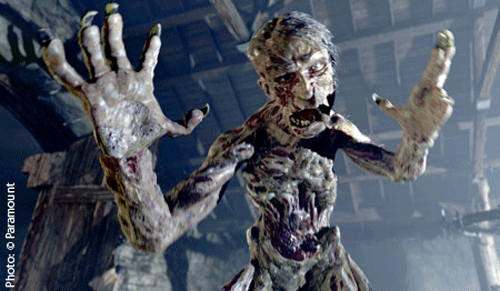
photo courtesy Paramount and powerlisting.wikia.com
"The grim spirit was called Grendel, known as a rover of the borders, one who held the moors, fen and fastness. Unhappy creature, he lived for a time in the home of the monsters' race..."
With a monster on the loose, the hero Beowulf arrives on the scene and fulfills all of the requirements for a hero. Beowulf first encounters the monsters when he rids Hrothgar's hall (Heorot) of the murderous Grendel by ripping off his arm. Glory in the battle was given to Beowulf. Grendel must flee from there, mortally sick, seek his joyless home in the fen-slopes.
But, with Grendel's demise, another monster arises: "It came to be seen, wide-known to men, that after the bitter battle an avenger still lived for an evil space. Grendel's mother, woman, monster-wife, was mindful of her misery, she who had to dwell in the terrible water..." Finally, after diving down to her lair and struggling with her, Beowulf kills her with a god-forged sword.
Greeks and Romans also
Then the Greek and Roman gods led by Jupiter fought against a coalition of giants, Titans and monsters; it was a war for the cosmos itself. The lands of the earth was shattered; islands emerged from the deep; mountains fell into the sea; rivers ran dry or change its course, flooding the land. And the bones of the giants and monsters were buried were they fell.
Myths of dragons, monsters and fabulous beasts are traditional stories, handed down from generation to generation by word of mouth or recorded in ancient texts, in order to explain the unexplainable. Some myths may once have been rooted in truth (such as those about heroes), but no myth is real. Myths have unbelievable acts in them so that they can carry through generations and tell a story. Because the roving troubadour, the teller of folk tales and his avid listeners knows it is not true and to make the story fantasy are usually set in a real place but the acts are definitely not true.


[1] Catalog Dragons, Monsters and Fabulous Beasts -Exhibition Bible Lands museum Jerusalem, Israel -- edited Joan Goodnick Westenholz
[2] www.eaudry.com/myth/basilisks.htm
[3] The New English Bible -- Oxford University Press
[4] Encyclopedia Judaica -- edited by Ketter Press
[5] Earliest Civilizations of the Near East -- Thompson and Hudson, London.
[6] An aquatic mammal found on the coasts of the Indian Ocean from eastern Africa to northern Australia. It is distinguished from the manatees by its forked tail.
[7] photo courtesy of www.fanpop.com, Ulises and Sirens by William Waterhouse
[8] http://talker96.wordpress.com/2011/10/28/talker96-special-report-just-because-a-pegasus-can-fly-it-doesnt-mean-its-magical/
[9] www.spiritsnextmove.net/2012/05/07/ego-v-unique-self-a-lesson-from-thor-god-of-thunder

<
 December 2012 -- The giant squid has been captured on video in its natural habitat for the first time ever.
December 2012 -- The giant squid has been captured on video in its natural habitat for the first time ever.